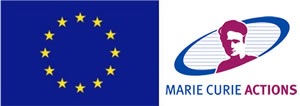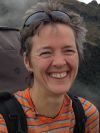Tracking past human impact on islands by improving palaeoecological reconstructions with PalEnDNA analysis
Revealing the past occurrence of “ghost taxa” and unlocking past records from “silent sites”

Island ecosystems host a significant proportion of global biodiversity, but their rich insular biotas are also more vulnerable and less resistant to novel pressures than continental biotas. Human colonization has been a relatively recent event on most islands globally, and has nearly always resulted in devastating losses of biodiversity.
The Canary Islands were no exception; these oceanic islands were colonized by aborigines more than 2000 years ago and later by Europeans, and have been transformed since this time. Despite being one of the most biodiverse regions within Europe and a target for EU biodiversity policies, there is a key knowledge gap about the pre-human state and natural variability of unmodified Canarian ecosystems that could help planners and managers to guide their strategies. This makes the Canaries the perfect place to reconstruct baseline ecosystem states and the long-term impacts of human activities.
ISLANDPALECO will assess the timing and extent of human impact on Canary Island ecosystems by providing detailed reconstructions of past environments, combining innovative and conventional palaeoecological tools and integrating the results in conservation ecology and management strategies. One of the main difficulties in the implementation of palaeoecological techniques in the Canaries is to detect fossils. This is due to poor conditions for fossil preservation at certain sites, i.e. “silent sites”, and under-representation of several key taxa, such as Lauraceae, in the fossil record, i.e. “ghost taxa”. The analysis of ancient DNA (aDNA) from palaeoenvironmental samples, defined as palaeoenvironmental DNA (PalEnDNA), provides a novel complementary tool to traditional palaeoecological proxies.
The main aims of ISLANDPALECO are:
1) to improve the reconstruction of past environments in the Canary Islands by revealing the past occurrence of “ghost taxa” and unlocking past records from “silent sites”. This will be by means of PalEnDNA analysis combined with traditional tools in palaeoecology;
2) to assess the timing and extent of human impact on Canarian ecosystems following the two waves of human colonization, based on new and existing improved palaeoenvironmental reconstructions, providing pre-human vegetation baselines, and related post-(aboriginal)colonization and post-(European)contact vegetation responses; and
3) to communicate the results from ISLANDPALECO to both scientists and managers so that palaeoecological information can be easily incorporated into ecological restoration and conservation, and disseminated to the society via scientific, academic and popular media.
This will be the first time that PalEnDNA analysis will be implemented in the Canaries and probably one of the few cases on islands, becoming a valuable benchmark example of the applicability of PalEnDNA analysis in other island regions. This project has received funding from the European Union’s Horizon 2020 research and innovation programme under the Marie Skłodowska-Curie grant agreement No 700952.



 Janet Wilmshurst
Janet Wilmshurst